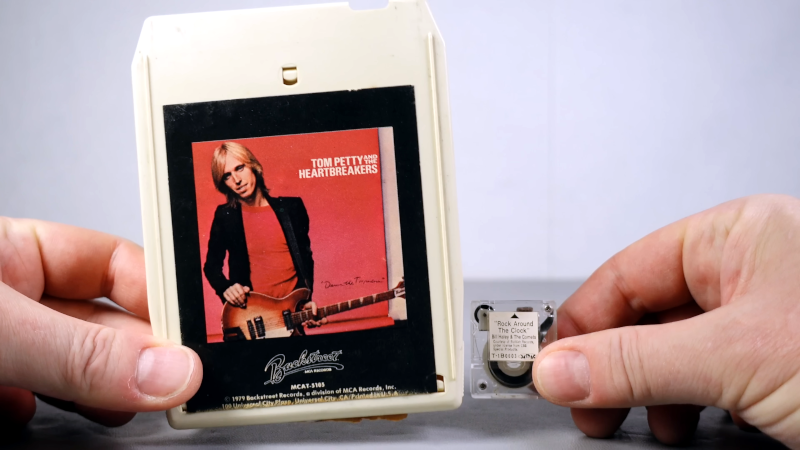If you want to add sound to something these days, you usually store it digitally. Microcontrollers are cheap and fast, and you can hold a lot of audio on a small flash card or in a ROM. But back “in the day,” storing audio was often done with tape. If you wanted something you could automate, you often turned to an endless loop tape. They had the advantage of not needing rewinding and had a way to sense spots on the tape (usually the start). The 8-track, for example, was an endless loop tape, and radio stations used “carts” (technically Fedelipak cartridges). But what if you wanted to build something tiny? Bandai had the answer, and [Tech Moan] shows the 1986-era tiny carts.
In the US, these appear to be mainly in the realm of novelty items. [Tech Moan] has an Elvis figurine that sings thanks to the tape and a diminutive jukebox. He suspects these must have been used in something else, perhaps in the Japanese market.
A quick teardown identified some of the problems he noted with the jukebox. However, figuring out why some of the tapes wouldn’t play required tearing apart one of the tapes. He transferred the tape to a standard cassette shell, and it played, so the implication is the tapes inside are just standard cassette media. For 8 tracks, special tape prevents the tape from sticking together, and it appears that, after 40 years, the Bandai carts were sticking. Probably, the designers didn’t think anyone would be playing these in 2023.
There isn’t much about these, although they have an entry in the Museum of Obsolete Media. These are truly tiny compared to an 8-track tape and even smaller than the tiny endless loop tape that was in an old phone answering machine.. Too bad you can’t convert Elvis into a police scanner.

















You remember the TRS-80 era “stringy floppy”?
The ZX Microdrive (also used on the multi-tasking, 68008-based Sinclair QL from 1984, the computer that introduced Linus Torvolds to mult-tasking) was also an endless tape loop storage medium. I still have at least 20 of them :-) (I had a QL too). I eventually added a floppy drive to the QL and copied all my microdrive data to it (7 microdrive cartridges = 1 x 720 kb floppy); then copied all the floppy disks to my Performa 400’s hard disk when I bought that; then copied them all to all my subsequent computers!
Hackaday covered the Microdrive back in 2020.
https://hackaday.com/2020/09/18/the-zx-microdrive-budget-data-storage-1980s-style/
Yeah, I think the tape drive in the Sinclair QL is smaller. I have one, incase anyone wants me to measure it.
When I was a kid, I thought about diskettes and why they don’t make one with a square roll of wide magnetic tape much like film stock looped around two pins in an endless loop. It would have been in a cartridge about 5mm thick, with magnetic heads on the inside and outside of the loop, so you could record on both sides.
That would have had many times the surface area to write on, but I suppose the material would have to bend around the pins in such a tight turn that it would wear out quickly. The cartridge would have to be made thicker, and then it would be just as big as a stack of diskettes.
“Probably, the designers didn’t think anyone would be playing these in 2023.”
Do you think they realized back then just how obsolete tape would be? I bet there is something you would picture still being around that many years from now that won’t be.
I’m guessing they just didn’t care about making it last that long because by that time they made their money selling it a long time ago. Engineering it to last the decades just means less profit.
Most people in the 1900’s thought we’d still be flying in open cockpit planes in 20 years when the DC 3 was flying high. I took apart an early Betamax years ago, more screws than I’ve ever seen in a single consumer device. The last VCR’s had a ground screw and the cover screws. Plastic snap-in stuff inside.
Anyone remember Pocket Rocker? Small brightly colored tape player from the 80s using those tiny tapes.
Techmoan mentions that in the video, and provides a side-by-side comparison.
Fedelipak -> Fidelipac